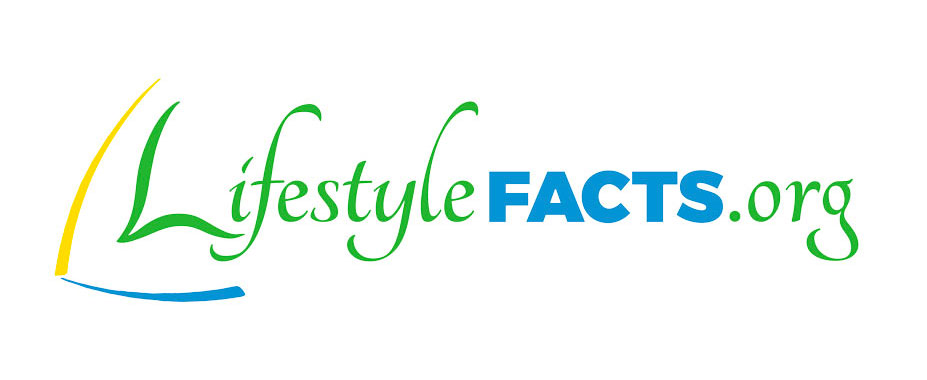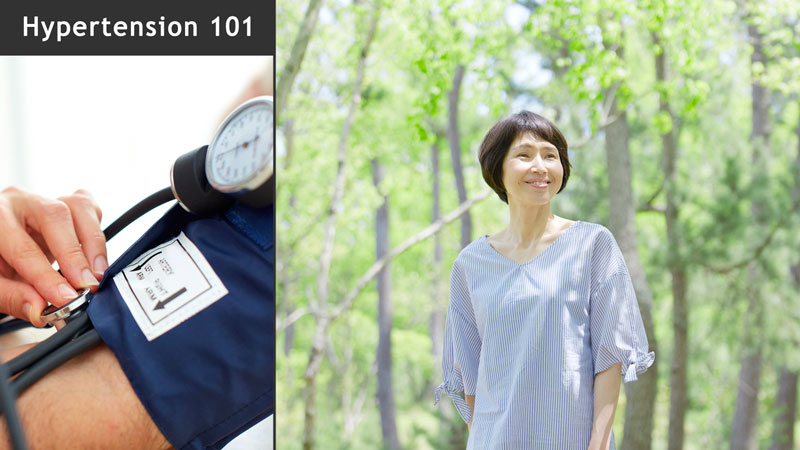By Marc Braman, MD, MPH
Marc Braman(MD, MPH):
Now I think this is a fun topic, nature and hypertension. How does this work, what’s going on? Now it turns out, in case you haven’t noticed, that we human beings have been together with the natural world for kind of a long time. Basically as long as we’ve existed. And that’s a healthy, symbiotic sort of relationship. When we start to pull that apart and we don’t have that anymore, our health breaks down. No surprise. So in this session, we’re going to talk about some of this nature-human physiology sort of relationship and how it impacts our blood pressure. Specifically we’re going to focus on air, sound, light, natural environments, and pets.
Okay, air. It turns out that air pollution, big cities, is associated with elevated blood pressure. There’s a lot of reasons for this. I actually participated in some research looking at some of this, increased rates of heart attacks and so forth, when the pollution went up. Obviously we don’t want to be breathing dirty air. Not rocket science. Okay, and then there’s personal air pollution, as in smoking. Again, not rocket science, we pretty much know that’s a really bad idea. Here’s an interesting one though: breathing. It turns out our lungs and our breathing are kind of this cool intersection between our nervous system, our vascular system, and our lungs or breathing system. When we get stressed out, our breathing changes. Rapid and shallow with acute stress, suppressed with chronic stress, which is why my smart watch taps me on the wrist occasionally when it detects these breathing patterns and reminds me to “breathe.” The good news is that the reverse is also true. We can control our breathing and calm our nervous system down. So stop, do slow deep breathing, and amazing physiologic changes can happen.
Quick story. A doctor of Osteopathic medicine colleague of mine, years ago, crazy hectic, busy clinic. We’re in the doctor’s office doing our work. We chatted for a minute, he told me he did meditation. Pushes a chair back and within one to two minutes, eyes closed, slow deep breathing, he has his heart rate down to 40 beats a minute. I was blown away. I didn’t know you could do that. They didn’t teach me that in medical school. It is amazing what we can do if we learn to engage with our own physiology effectively. And that heart rate thing also means blood pressure. So there’s a bunch of studies looking at some breathing and blood pressure sorts of issues, there are apps, there’s electronic devices to help one with this. The bottom line is, grab ahold of the breathing system, calm the nervous system down with that.
What about sound? Okay, there’s healthy and unhealthy issues. Well it turns out noise, road noise in particular in some studies, is associated with hypertension. And this seems to also be true in children, even to the degree that it seems to affect their comprehension and their memory. Not good. And it seems to be especially true for noise at night. And this makes sense, again, getting back to sleep, if we can’t properly rest, if we’re not truly resting, whether we’re conscious or not, the system is not going to work right. On the flip side, the positive side, music. Calming music actually just does exactly that, it calms you down, including your blood pressure. And specifically, researchers note the kind of music as simple repetitive rhythm, predictable dynamics, low pitch, slow tempo, consonants of harmony, no percussive instruments, string composition, and recognized instrumental and vocal timber. This actually sounds a lot like normal, healthy, biological rhythms, which is probably a lot of how it works. And when they do this kind of music, sure enough, it reduces anxiety, lowers blood pressure, and lowers stress hormones.
Light. Light is really interesting. It turns out that sunlight has a direct, vasodilating, meaning it relaxes the blood vessels, lowers the pressure, on the human body. Lay out in the sun, blood vessels dilate, you’re blood pressure goes down. Be careful when you stand up fast. The sun is also a regulator of our wake-sleep cycles. It helps us wake up and low light helps us go to sleep at night, which again is very important for the proper sync with nature. Also, Vitamin D deficiency has been associated with hypertension. Light, important for our blood pressure too.
Now, natural environments. Now most of us, most of our societies or cultures recognize that nature is a good thing, especially green. We associate green with peaceful scenarios, scenes, calming sorts of effects. We’ve recognized this throughout history, we’re just now sort of catching up on the science. We like trees and green grass, we plant lawns. A lot of work to just have this pretty flat green area in front of our house. One interesting study that was done in Japan was done on what they call forest bathing. New concept. They compared a forest environment versus a city environment for blood pressure and hormone effects. And they found lower concentrations of cortisol, lower pulse rate, lower blood pressure, greater parasympathetic nerve activity, heal-repair-restore, lower sympathetic nerve activity, the fight or flight, than do city environments. Not too surprising for most of us. And researchers spoke about something interesting, they spoke about the development of forest medicine. I don’t know about you, I love the mountains, I love the woods, sign me up.
Pets. Pet ownership is associated with lower risk factors for cardiovascular disease, including blood pressure. Now some studies would indicate that some of the key active ingredients seem to be the companion bond, your own pet that you really like, that likes you, as well as the petting, the physical presence and sort of loving interaction with animals. Healthy connections are physically healthy, even between humans and animals. And yes, there’s actually even some evidence that, at least for many people, watching those ever popular cat videos lowers our stress and increases our happiness, which should lower our blood pressure.
So very cool, nature and blood pressure and how it affects each other. And especially, these nature things, are pleasurable. We enjoy them. Your treatment, your lifestyle medicine treatment for your blood pressure, can and should be very enjoyable for much if not all of it. Increasing our engagement with an enjoyment of the natural world, yes, is in fact healing. Just as we seem to have always already known.
Global association between ambient air pollution and blood pressure: A systematic review and meta-analysis. Yang BY, Qian Z, Howard SW, Vaughn MG, Fan SJ, Liu KK, Dong GH. Environ Pollut. 2018 Apr;235:576-588. doi: 10.1016/j.envpol.2018.01.001. Epub 2018 Jan 11. Review.
Effects of diaphragmatic breathing on ambulatory blood pressure and heart rate. Lee JS, Lee MS, Lee JY, Cornélissen G, Otsuka K, Halberg F. Biomed Pharmacother. 2003 Oct;57 Suppl 1:87s-91s.
RESPeRATE: the role of paced breathing in hypertension treatment. Cernes R, Zimlichman R. J Am Soc Hypertens. 2015 Jan;9(1):38-47. doi: 10.1016/j.jash.2014.10.002. Epub 2014 Oct 16. Review.
Relationship between noise annoyance from road traffic noise and cardiovascular diseases: a meta-analysis. Ndrepepa A, Twardella D. Noise Health. 2011 May-Jun;13(52):251-9. doi: 10.4103/1463-1741.80163. Review.
Overweight, air and noise pollution: Universal risk factors for pediatric pre-hypertension. Kelishadi R, Poursafa P, Keramatian K. J Res Med Sci. 2011 Sep;16(9):1234-50.
Music therapy: proposed physiological mechanisms and clinical implications. Watkins GR. Clin Nurse Spec. 1997 Mar;11(2):43-50. Review.
UVA irradiation of human skin vasodilates arterial vasculature and lowers blood pressure independently of nitric oxide synthase. Liu D, Fernandez BO, Hamilton A, Lang NN, Gallagher JMC, Newby DE, Feelisch M, Weller RB. J Invest Dermatol. 2014 Jul;134(7):1839-1846. doi: 10.1038/jid.2014.27. Epub 2014 Jan 20.
The Association between Serum 25(OH)D Status and Blood Pressure in Participants of a Community-Based Program Taking Vitamin D Supplements. Mirhosseini N1, Vatanparast H2, Kimball SM3. Nutrients. 2017 Nov 14;9(11). pii: E1244. doi: 10.3390/nu9111244.
The physiological effects of Shinrin-yoku (taking in the forest atmosphere or forest bathing): evidence from field experiments in 24 forests across Japan. Park BJ, Tsunetsugu Y, Kasetani T, Kagawa T, Miyazaki Y. Environ Health Prev Med. 2010 Jan;15(1):18-26. doi: 10.1007/s12199-009-0086-9.
Pet ownership and risk factors for cardiovascular disease. Anderson WP, Reid CM, Jennings GL. Med J Aust. 1992 Sep 7;157(5):298-301.
Physiological effects of human/companion animal bonding. Baun MM, Bergstrom N, Langston NF, Thoma L. Nurs Res. 1984 May-Jun;33(3):126-9.
Emotion regulation, procrastination, and watching cat videos online: Who watches Internet cats, why, and to what effect? GallMyric J. Computers in Human Behavior. Volume 52, November 2015, Pages 168-176.





